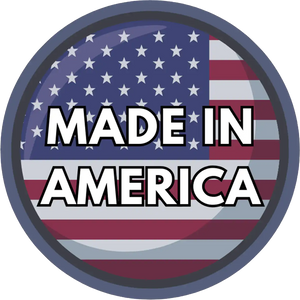Learn to make DIY Montessori number blocks at home with simple materials. Budget-friendly alternatives to professional educational toys for early math learning.
Creating a rich learning environment for your child doesn't have to break the bank. While our wooden number block set offers exceptional quality and durability, making your own DIY version can be a rewarding project that still provides the essential learning benefits.
Understanding the Purpose Behind Number Blocks
Before diving into construction, it's crucial to understand why Montessori number blocks are so effective. These materials serve as concrete representations of abstract mathematical concepts, allowing children to physically manipulate numbers and see mathematical relationships in action. The tactile experience of handling blocks while counting creates neural pathways that support mathematical understanding far beyond what worksheets or digital apps can achieve.
The traditional Montessori approach emphasizes self-correction, independence, and multi-sensory learning. Your DIY blocks should incorporate these principles while remaining simple enough for home construction.
Materials You'll Need
Option 1: Wooden Block Version
- Pine or hardwood blocks (1-inch cubes work well)
- Non-toxic wood stain or paint in multiple colors
- Fine-grit sandpaper
- Wood numbers (available at craft stores) or number stencils
- Non-toxic wood glue
- Clear protective finish
Option 2: Cardboard Alternative
- Heavy cardboard or cardstock
- Ruler and pencil
- Craft knife or scissors
- Non-toxic markers or paint
- Laminating sheets or clear contact paper
- Double-sided tape
Option 3: Foam Block Version
- Large foam blocks from craft stores
- Permanent markers
- Number stickers
- Craft knife for cutting
Step-by-Step Construction Guide
Creating Wooden Number Blocks
Step 1: Preparation Start by sanding all wooden blocks until smooth. This step is crucial for safety and ensures paint adherence. Clean blocks thoroughly with a damp cloth and allow to dry completely.
Step 2: Color Coding (Optional) Traditional Montessori materials use specific colors to represent different number values. Consider using:
- Units (1-9): Red or natural wood
- Tens (10-90): Blue
- Hundreds (100-900): Green
Apply your chosen colors using non-toxic paint or wood stain, allowing each coat to dry completely before handling.
Step 3: Number Application Once the base color is dry, attach wooden numbers or use stencils to paint numbers clearly on each block. Ensure numbers are large enough to read easily but proportionate to the block size.
Step 4: Protective Finish Apply a clear, non-toxic finish to protect your work and make the blocks easier to clean. This step is especially important if multiple children will be using the materials.
Cardboard Alternative Instructions
Step 1: Design and Cut Create templates for different sized blocks representing various number values. Cut sturdy cardboard pieces and fold into cube shapes, leaving tabs for gluing.
Step 2: Assembly Glue cubes together securely, ensuring all edges are firmly attached. Allow adequate drying time before proceeding.
Step 3: Decoration Paint or color blocks according to your chosen system. Add numbers clearly using markers or number stickers.
Step 4: Protection Laminate individual faces or cover with clear contact paper to increase durability and allow for easy cleaning.
Design Considerations for Effective Learning
Size
Blocks should be large enough for small hands to grasp comfortably but not so large that they become unwieldy. A 1-inch cube typically works well for most children aged 3-8.
Weight and Texture
Different materials provide varying tactile experiences. Wooden blocks offer satisfying weight and natural texture, while foam blocks are lightweight and safe for younger children who might throw materials.
Visual Clarity
Numbers should be clear, properly oriented, and sized appropriately for the block. Avoid decorative fonts that might confuse number recognition.
Self-Correction Features
Consider incorporating features that allow children to check their own work, such as control cards with correct sequences or patterns that only fit together one way.
Safety Considerations
When creating DIY materials, safety must be your top priority:
- Use only non-toxic paints, stains, and finishes
- Sand all rough edges thoroughly
- Ensure small parts cannot be swallowed
- Test durability before allowing unsupervised use
- Regularly inspect for wear or damage
Storage and Organization
Create an appealing storage system that encourages independence:
- Clear containers allow children to see materials
- Label containers with pictures and words
- Designate specific shelf space at child height
- Include a work mat or tray for activities
Enhancing Your DIY Set
Once you've mastered basic number blocks, consider expanding your homemade Montessori materials:
- Create matching numeral cards
- Make quantity cards with dots or objects
- Design simple addition and subtraction work mats
- Craft storage solutions that encourage organization
When DIY Isn't Enough
While DIY solutions work wonderfully for many families, there are times when investing in professional materials makes sense:
- If you're planning to use materials intensively over many years
- When working with multiple children who need durable materials
- If time constraints make DIY impractical
- When consistency across multiple sets is important (classroom settings)
Professional sets like Dannico's wooden number blocks offer the advantage of tested durability, consistent sizing, and beautiful craftsmanship that can last through multiple children.
Conclusion
Creating DIY Montessori number blocks offers an excellent opportunity to provide quality educational materials while staying within budget. The process itself reinforces the Montessori principle of purposeful work, whether you're crafting alone or involving your children in age-appropriate ways.
Remember that the goal isn't perfection but functionality. Your homemade blocks don't need to match the aesthetic beauty of professional sets to be educationally effective. What matters most is that they serve their purpose: helping children develop concrete understanding of mathematical concepts through hands-on manipulation.
Whether you choose to craft your own blocks or invest in professionally made sets like Dannico's collection, you're providing your child with tools that support natural mathematical development according to time-tested Montessori principles. The investment in concrete learning materials, whether financial or time-based, pays dividends in your child's mathematical confidence and understanding.

